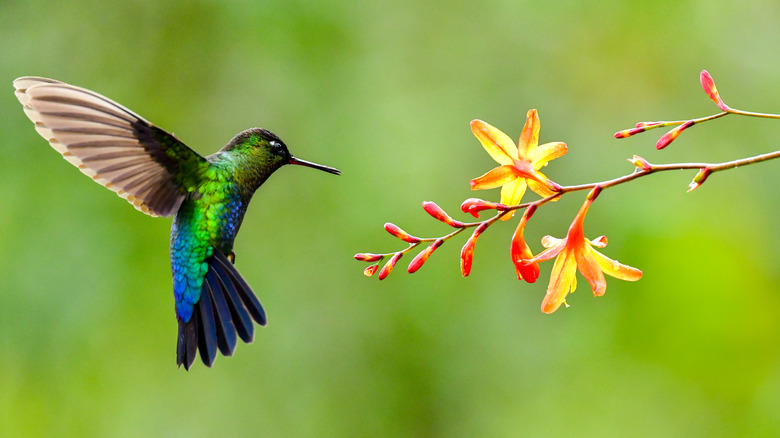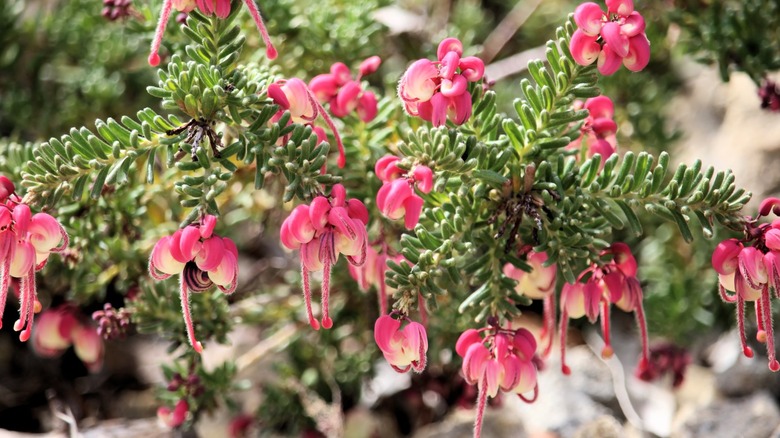The Gorgeous Flowering Plant That'll Make Your Garden Come Alive With Hummingbirds
With their beautiful colors and intriguing aerial behavior, hummingbirds are always a welcome sight. There are 15 species of them found in the U.S., and you can attract hummingbirds into your garden with essential features — especially by picking plants and flowers that they enjoy. A bright, bushy evergreen shrub to consider bringing into your space is the woolly grevillea (Grevillea lanigera). Despite being endemic only to the southeastern Australian coast, woolly grevillea — specifically the cultivars 'Coastal Gem' and 'Mt Tamboritha' — has made its way to the U.S. to brighten up our yards and feed the hummingbirds!
Hummingbirds love drinking nectar from brightly colored tubular flowers, and the clusters of pink and red blooms that woolly grevillea produces suits them well. Despite being a fairly dense shrub, the small, narrow leaves allow hummingbirds to get to the nectar in the flowers easily enough. It is a low-spreading plant, only reaching around 1 foot tall, and hardy to USDA Hardiness Zone 8. It can grow up to 5 feet in width, with its long branches reaching out in spiky, random directions. Blooming from winter to late spring, woolly grevillea is an interesting-looking shrub that may be a perfect addition to your yard if you want to attract hummingbirds and bring in new shapes and textures.
How to care for woolly grevillea
Woolly grevillea is a fairly hardy plant that suits a range of climates. It can do well in full sun or partial shade, which allows you to place it in a variety of locations in your garden. You may wish to use these tips and tricks to grow it as a thriving ground cover plant alongside other flowers that hummingbirds love to create a mix of hues and shapes. It enjoys neutral or slightly acidic soil that is well-drained and can also tolerate drought and moderate frost once established. For the first year, ensure that you water your grevillea during any dry periods.
This will allow it to settle in and extend its roots. When it comes to ongoing care, the woolly grevillea does not need a lot of pruning or watering. You may want to give it the occasional trim to keep its shape and density looking good, but apart from that, it tends to be happiest when it's left alone. Fertilizing isn't necessary for this shrub, but it is helpful to add mulch to the soil every year to keep the area weed-free, moist, and healthy.

